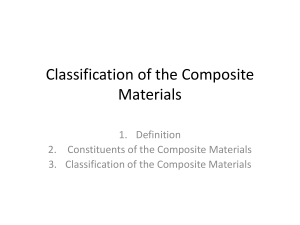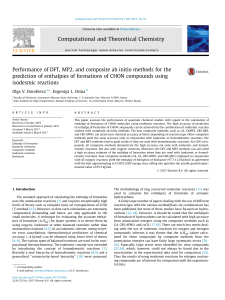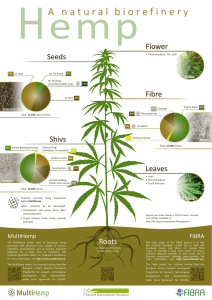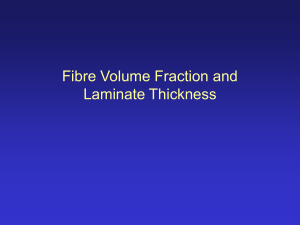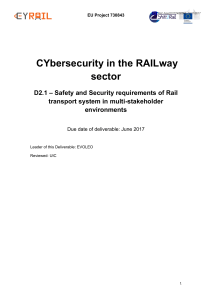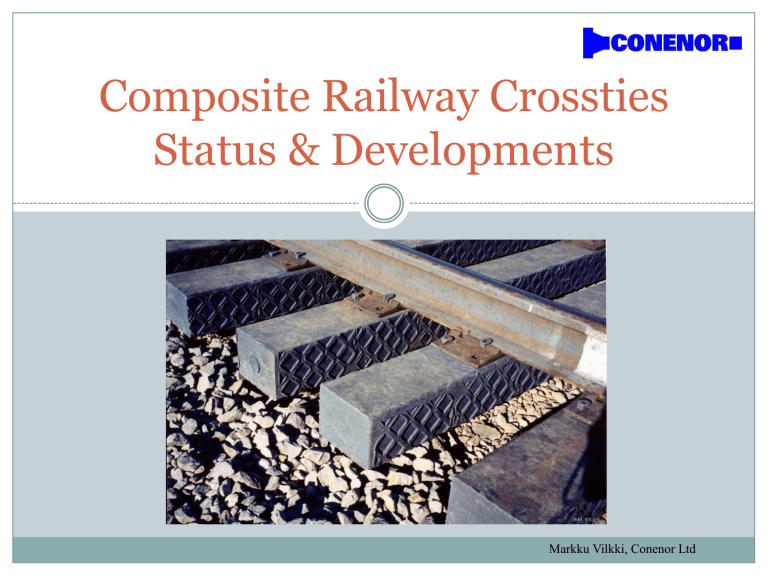
Composite Railway Crossties Status & Developments Markku Vilkki, Conenor Ltd Composite Railway Crossties (known also as ”Sleepers”) O V E R T H E PA S T 2 0 Y E A R S COMPOSITE SLEEPERS MADE FROM R EC YC L E D P L A S T I C S H AV E B EC O M E C O M M O N S TA N D A R D P R O D U C T S S E V E R A L M A N U FA C T U R E R S A L L OVER THE WORLD INTHE U S A , R U S S I A , C A N A D A , J A PA N , U K , G E R M A N Y, I N D I A , TA I W A N , A F R I C A , THAILAND, NETHERLANDS AND AUSTRALIA C O M P O S I T E R A I L W AY S L E E P E R S ARE REPLACING EXISTING CONCRETE, S T E E L A N D , P A R T I C U L A R LY, T I M B E R O N E S I N B OT H M A I N L I N E A N D H EAV Y HAUL RAIL NETWORKS references from one US manufacturer Axion Benefits of Composite Sleepers ENGINEERING - M E E T A N D E X C E E D N AT I O N A L S TA N D A R D S MORE DURABLE - R E S I S TA N T T O R O T, F U N G U S , I N S E C T S , A N D M O I S T U R E E A S Y - T O - I N S TA L L - I N S TA L L S U S I N G T R A D I T I O N A L W O O D - T I E E Q U I P M E N T E N V I R O N M E N TA L LY S A F E R & C L E A N E R - I N E R T M AT E R I A L A N D C O N TA I N S N O T O X I C M AT E R I A L S G R E E N S U S TA I N A B L E P R O D U C T - M A D E F R O M 1 0 0 % R E C YC L E D M AT E R I A L A N D A R E 1 0 0 % R E C YC L A B L E AT T H E E N D O F T H E I R L O N G L I F E PROVEN LONGER LASTING - R E S I S T P L AT E W E A R , H O L D S P I K E S , A N D M A I N TA I N G A U G E A C C U M U L AT I N G W E L L A X L E L O A D S LOW E R L IF E C YC L E CO STS Manufacturers of Composite Sleepers H T T P : / / W W W. A X I O N S I . C O M / H T T P : / / W W W. AT L A S T I E S . C O M / I N D E X . P H P H T T P : / / W W W. B O I S C O M M E R C I A L W O O D . C O M / C AT C O N T E N T. A S P ? C AT 2 I D = 2 4 HTTP://INTEGRICO.COM/PRODUCTS/INTEGRITIES/ H T T P : / / W W W.T I E T E K . N E T/ P R O D U C T. A S P H T T P : / / W W W. S I C U T. C O . U K / H T T P : / / W W W. I C S S E R V I C E S . C O M . A U / W K G / P D F S / C A R B O N L O C M A NUALGENERAL5.PDF H T T P : / / T V E M A . C O M / C ATA L O G / S U P P O R T - S Y S T E M S . H T M L Manufacturing Process of Composite Sleepers MANUGACTURING OF COMPOSITE SLEEPERS IN THREE STEPS; 1. PROCESSING PROPER PLASTIC WASTE 2. PRODUCTION OF COMPOSITE MATERIAL FORMULATION WITH OR WITHOUT REINFORCEMENTS 3. PRODUCTION OF SLEEPERS - by intrusion method - by extrusion method Manufacturing Process of Composite Sleepers VIDEO IN YOUTUBE FROM INTEGRICO HTTPS://WWW.YOUTUBE.COM/WATCH?V=8T ZNUV-0WLS Different Types of Composite Sleepers TYPE-1 SLEEPERS WITH SHORT OR NO FIBRE REINFORCEMENTS S L E E P E R S T H AT C O N S I S T O F R E C YC L E D P L A S T I C ( P L A S T I C B A G S , S C R A P P E D VEHICLE TYRES, PLASTIC COFFEE CUPS, MILK JUGS, LAUNDRY DETERGENT BOT T LES ETC. ) O R BI T UMEN W I T H FI LLERS (SA N D, G RAVEL , RECYCLED G LA SS O R SHORT GLASS FIBRES < 20 MM) TYPE-2 SLEEPERS WITH LONG FIBRE REINFORCEMENT IN THE LONGITUDINAL DIREC TION TYPE-2 SLEEPERS ARE SLEEPER TECHNOLOGIES REINFORCED WITH LONG CONTINUOUS GLASS FIBREREINFORCEMENT IN THE LONGITUDINAL DIRECTION AND NO OR VERY SHORT RANDOM FIBRE IN THE TRANSVERSEDIRECTION TYPE-3 SLEEPERS WITH FIBRE REINFORCEMENT IN LONGITUDINAL AND TRANSVERSE DIRECTIONS T YPE - 3 SLEEPERS HAVE LO NG REI NFO RCEMENT FI BRES I N BOT H LO NG I T UDI NA L A N D T R A N S V E R S E D I R E C T I O N S A N D C O N S E Q U E N T LY B O T H T H E F L E X U R A L A N D S H E A R B E H AV I O U R A R E D O M I N AT E D B Y F I B R E S . Different Types of Composite Sleepers Source: Composite Railway Sleepers – Recent developments, challenges and future prospects / Article in Composite Structures · August 2015 Comparing Advantages and Disadvantages of Composite Type1 and Type2 Sleepers Source: Composite Railway Sleepers – Recent developments, challenges and future prospects / Article in Composite Structures · August 2015 Summary of Composite Type1 Sleepers The most common composite sleeper material, Type-1 sleepers offer a range of benefits including ease of drill and cut, good durability, consumption of waste materials, reasonable price, and tough. However, it suffers from low strength and stiffness, limited design flexibility, temperature and creep sensitivity, and low resistance to fire. The notable sleepers in this category are TieTek (USA), Axion (USA), IntegriCo (USA), I-Plas (UK), Tufflex (S-Africa), Natural rubber (Thailand), Kunststof Lankhorst Product KLP (Netherlands), Mixed Plastic Waste MPW (Germany) and Woodcore (USA). Source: Composite Railway Sleepers – Recent developments, challenges and future prospects / Article in Composite Structures · August 2015 How to Improve Strength of Composite Type1 Sleepers Because of the short length of the fillers, they do not have a major reinforcing effect and the failure behavior of these sleepers is mainly polymer driven. Due to the lack of any long reinforcement fibres these sleepers are flexible and expand and contract significantly with temperature. However, as stronger Type 2 and Type 3 composite sleepers become very expensive up to 10x more compared to wood sleepers, there is an incentive to develop further the low cost Type 1 sleepers to become stronger and more durable ! Comparing the Performance of Composite Sleepers to AREMA (USA) Specification Requirements Source: Composite Railway Sleepers – Recent developments, challenges and future prospects / Article in Composite Structures · August 2015 MOR- and MOE-values of Composite Type1 Sleepers Modulus of Rupture (flexural strength) and Modulus of Elasticity (stiffness) values for composite materials are defined in 3-point bending test in laboratory conditions The minimum values stated in AREMA (USA) specification (MOR @13.8 MPa and MOE @1.2 GPa) represent those levels typical for polyethylene (PE) polymer – and this is logical because Type 1 composite sleepers are made mainly from this waste material When producing the composite material formulation one may combine other stronger waste materials in the PE-waste polymer for improving the mechanical performance of Type 1 sleepers into much higher level without increasing costs !! Choice of Materials for Type1 Composite Sleepers MOR- and MOE-values of Conenor Developed FRP-Waste Reinforced HDPE-Waste Plastic MOR-values up to 36 MPa ! MOE-values up to 3 GPa ! Mechanical properties of ”FRC”material from waste exceed AREMA requirements by 2,5 times and outperform those existing Type 1 composite sleepers in the market Ideal for stronger Type 1 Composite Sleepers ! FRP-Waste Reinforced Material is an Invention by Conenor Ltd Patent Application EP 3 159 127 A2 Simple and Low Cost Thermo-Mechanical Process Using Commodity Existing Equipment No Processing Waste Applicable Stronger Material for Plastic Processing (injection, extrusion, intrusion) Technology Available on License Basis see http://www.conenor.com/recyclingthermoset-frpwaste/ Conenor Ltd – a Private Development Company in Waste Composites SME founded 1995 Inventor of unique CONEX®-Extrusion Technology Participation in EU-Commission funded R&D-projects; - http://www.ircow.eu/ - https://osirysproject.eu/ - http://www.hiserproject.eu/ - http://cordis.europa.eu/project/rcn/210181_en.html - Outsourced client R&D-projects from waste composites for major corporations (including among others); - UPM; see http://www.conenor.com/client-projects-trials/ - StoraEnso - Kuusakoski / Metsähallitus - www.conenor.com Composite extrusion facilities for R&D, sampling and pilot production at Orimattila Town in South-Finland
